DevOps =>DevSecOps : the most heard buzz word in the IT industry
 Soumen Bhattacharjee
Soumen Bhattacharjee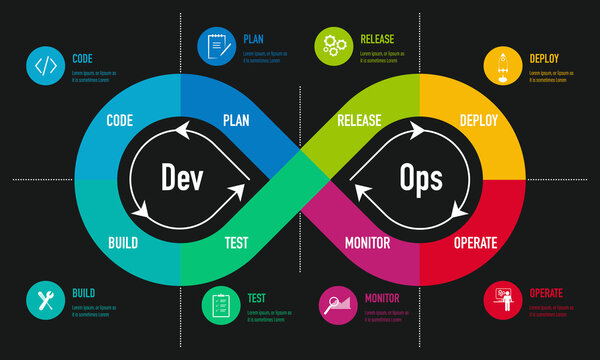
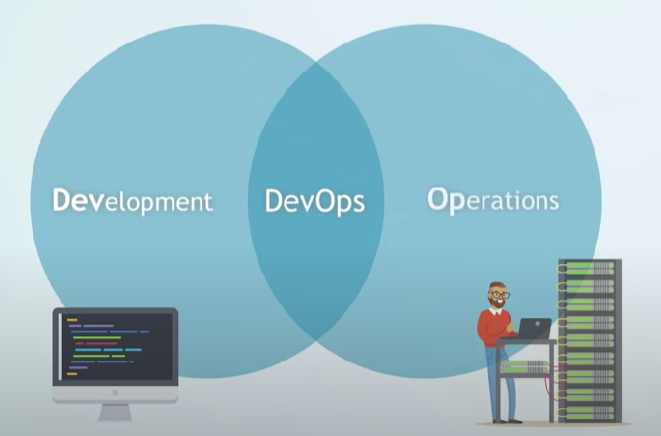
What is DevOps? What problems does it solve?
DevOps is a set of practices and cultural philosophies aimed at improving collaboration and communication between software development (Dev) and IT operations (Ops) teams.
The goal of DevOps is to streamline the software delivery process, from planning and development to deployment and operations, in order to deliver high-quality software more rapidly and reliably.
Transforming Software Development and Addressing Critical Challenges
DevOps principles include:
- Collaboration between development and operations teams
- Automation of repetitive tasks
- Continuous integration (CI) to frequently integrate code changes
- Continuous delivery (CD) to automate the deployment process
- Infrastructure as Code (IaC) for managing and provisioning infrastructure using code
- Monitoring and feedback loops for continuous improvement
- Embracing a microservices architecture for scalability and resilience.
Challenges that devops try to solve
DevOps aims to address several challenges that traditional software development and IT operations face. Some of the key challenges that DevOps seeks to solve include:
- Siloed teams and communication barriers
- Manual and error-prone processes
- Slow and inefficient release cycles
- Lack of agility and flexibility
- Poor quality and reliability
- Complex and fragile infrastructure
- Limited visibility and monitoring
DevOps tackles these challenges through collaboration, automation, CI/CD, agility, QA, IaC, and monitoring practices.
What is DevOps lifecycle & how does it work?
The DevOps lifecycle typically consists of several phases or stages, which may vary slightly depending on the specific context and organization. Here's a common breakdown of the DevOps lifecycle phases:
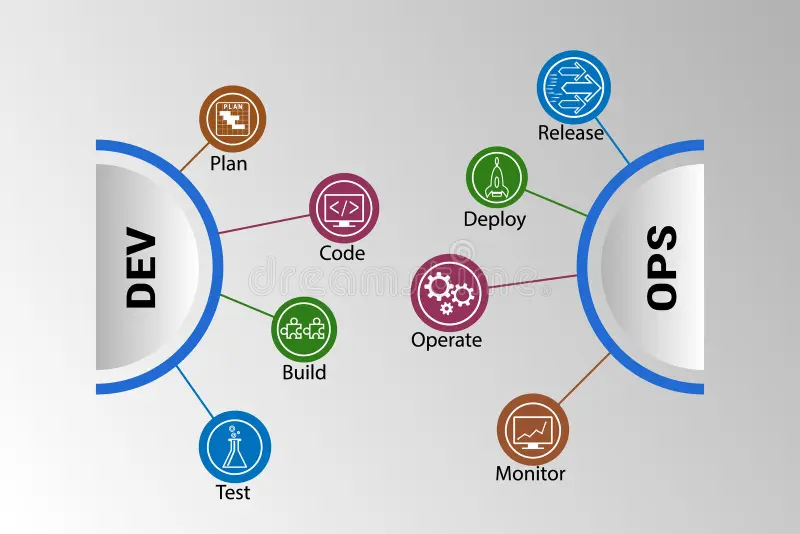
1. Plan: This phase involves defining the objectives, requirements, and timelines for the software development and deployment process. It includes tasks such as project planning, defining user stories, prioritizing features, and allocating resources.
2. Code: In this phase, developers write and modify code based on the requirements defined in the planning phase. Version control systems like Git are often used to manage and track code changes, enabling collaboration and code review among team members.
3. Build: The build phase involves compiling, building, and packaging the code into executable artifacts or binaries. Automated build tools like Jenkins or GitLab CI/CD are commonly used to automate the build process, run unit tests, and generate deployable artifacts.
4. Test: Testing is a critical phase where the quality and functionality of the software are verified. It includes various types of testing such as unit testing, integration testing, system testing, and user acceptance testing (UAT). Automated testing frameworks and tools help ensure the reliability and stability of the software.
5. Deploy: The deployment phase involves deploying the tested and validated code to production or staging environments. Continuous delivery (CD) practices enable automated deployment pipelines to push changes to production environments rapidly and consistently while minimizing downtime and risks.
6. Operate: In the operate phase, the deployed application or service is monitored, managed, and maintained in production environments. Monitoring tools collect and analyze metrics, logs, and performance data to detect and address issues such as performance bottlenecks, errors, and security vulnerabilities.
7. Monitor and Measure: Continuous monitoring and measurement are essential for evaluating the performance, reliability, and user experience of the deployed application or service. Monitoring tools provide real-time insights into system health, resource utilization, and user interactions, enabling teams to identify areas for optimization and improvement.
The "7Cs" of the DevOps lifecycle refer to the key principles or characteristics that guide DevOps practices:
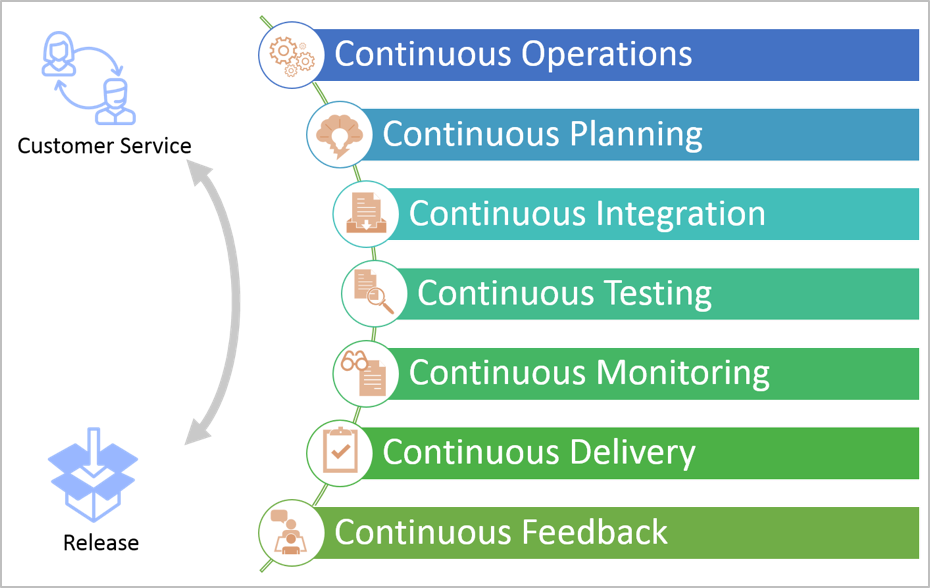
1. Culture: Encouraging collaboration, communication, and shared responsibility among development and operations teams.
2. Collaboration: Fostering cross-functional collaboration and teamwork to achieve common goals.
3. Continuous Integration: Integrating code changes into a shared repository frequently to detect and address integration issues early.
4. Continuous Delivery: Automating the deployment process to release software updates quickly, reliably, and with minimal manual intervention.
5. Continuous Testing: Implementing automated testing practices throughout the software development lifecycle to ensure quality and reliability.
6. Continuous Monitoring: Monitoring application performance, infrastructure health, and user experience in real-time to identify and resolve issues proactively.
7. Continuous Feedback: Gathering feedback from stakeholders, users, and monitoring systems to drive continuous improvement and innovation.
By embracing these principles and following the DevOps lifecycle stages, organizations can streamline their software delivery processes, accelerate time-to-market, and enhance the quality and reliability of their software products and services.
What about the Security in DevOps Culture ?
DevSecOps is an extension of the DevOps philosophy that integrates security practices into the software development and delivery process. It aims to embed security throughout the entire DevOps lifecycle, from planning and coding to testing, deployment, and operations. The goal of DevSecOps is to make security a shared responsibility among developers, operations teams, and security professionals, enabling organizations to build and deliver secure software more effectively.
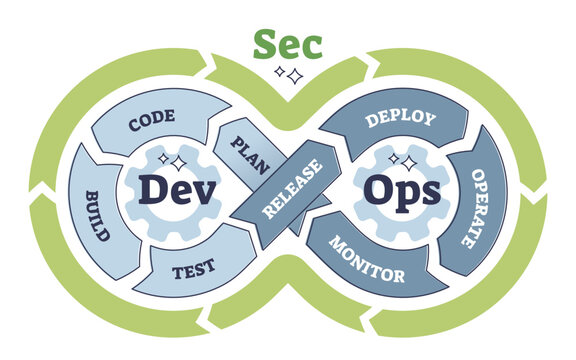
- Shift-Left Security: It emphasizes early incorporation of security considerations in the development lifecycle.
- Automation: DevSecOps relies heavily on automated security processes integrated into DevOps pipelines.
- Continuous Security Testing: It involves continuous testing for vulnerabilities throughout the development lifecycle.
- Security by Design: DevSecOps promotes building security into the design and architecture of software systems.
- Culture and Collaboration: Like DevOps, it fosters a culture of collaboration and shared responsibility among teams.
- Compliance and Governance: DevSecOps ensures compliance with regulatory requirements and internal security policies through automation and governance.
DevSecOps aims to create a secure and compliant software development and delivery environment by embedding security practices across the entire DevOps lifecycle.
Key Tools for DevOps Practices
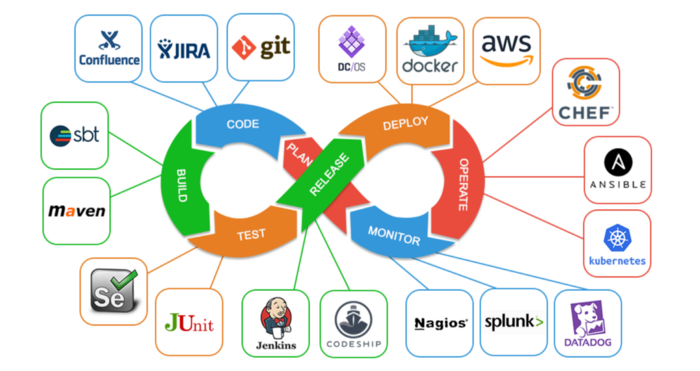
1. Jenkins: An open-source automation server used for building, testing, and deploying software projects. It supports continuous integration and continuous delivery (CI/CD) pipelines.
2. Git: A distributed version control system used for tracking changes in source code during software development. It facilitates collaboration among developers and enables version control.
3. Docker: A containerization platform that allows developers to package applications and their dependencies into containers for easy deployment across different environments.
4. Kubernetes: An open-source container orchestration platform used for automating deployment, scaling, and management of containerized applications. It provides features for container scheduling, service discovery, and load balancing.
5. Ansible: An open-source automation tool used for configuration management, application deployment, and infrastructure orchestration. It uses YAML-based configuration files and operates over SSH or PowerShell.
6. Terraform: An open-source infrastructure as code (IaC) tool used for provisioning and managing cloud infrastructure resources. It supports multiple cloud providers and enables infrastructure to be defined declaratively.
7. Prometheus: An open-source monitoring and alerting toolkit used for collecting and visualizing metrics from containerized and non-containerized environments. It provides powerful querying capabilities and integrations with various data sources.
8. Grafana: An open-source analytics and visualization platform used for creating dashboards and graphs to monitor and analyze metrics collected by monitoring systems like Prometheus.
9. JIRA: A project management tool used for tracking and managing software development projects, issues, and agile workflows. It provides features for task tracking, bug reporting, and collaboration among team members.
10. GitHub Actions: A CI/CD platform built into GitHub that allows developers to automate workflows, build, test, and deploy applications directly from their GitHub repositories.
In conclusion, DevOps represents a fundamental shift in how organizations approach software development, delivery, and operations. By fostering collaboration, embracing automation, and promoting continuous improvement, DevOps enables teams to overcome traditional challenges and deliver value to customers more efficiently and effectively. With its emphasis on agility, reliability, and innovation, DevOps is essential for organizations seeking to thrive in today's fast-paced and competitive digital landscape.
Subscribe to my newsletter
Read articles from Soumen Bhattacharjee directly inside your inbox. Subscribe to the newsletter, and don't miss out.
Written by
